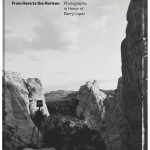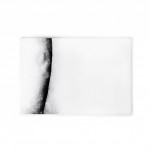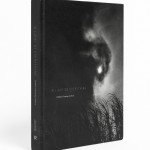Art + Science: Nature and Nurture: Doug Eng
It has been medically proven that when immersed within nature, one’s anger, fear and stress tends to melt away. Nature heals. Even placing a plant indoors can bring one closer to nature. For me, being in the mountains, desert and near the ocean, I can find my personal place of sanctuary. Yet, Mother Nature doesn’t just give and give. She, too, requires nurture. This week in Art + Science, I am featuring work that explores the symbiotic relationship that we have with our natural environment, from connections and personal healing to the challenges we face regarding the health of our planet. –Linda Alterwitz
Doug Eng, a photographer based in Florida, continues his investigations of the natural world, especially of forests of trees. In his series Fractured Forests, Eng takes a departure from his merging of aesthetics and architecture and focuses on the destruction of trees brought about by natural forces. The photographs document the aftermath of 2018 Hurricane Michael upon a 50-mile area of land between the Gulf Coast to the Georgia border.
Humans are constantly reminded of our planet’s environmental challenges. Not only by videos and photographs documenting the changes, but many of us observe transitions (from small to large scale) in our own environments.
Fractured Forest is more than documentation of Hurricane Michael’s devastation. The photographs represent a single voice, one that bears witness to the destruction that is close to home.
Linda Alterwitz: Doug, can you tell me more about your ongoing investigation of forests and the visual signatures of trees in growth. What is it that calls to you?
Doug Eng: I’ve been photographing trees for many years and graduated to long panoramas of forest scenes. These were featured in your last post on “Decoding the Infinite Forest” – Oct 9, 2016. Many of the studies focused on the industrial forests of the Southeast and the regularity and rhythm of the pine trees so prevalent here. In contrast, I visited several old growth areas in the Pacific Northwest and started to understand the role of natural deconstruction, renewal, and the visual differences of a natural vs. man-made environments. Old growth has its own “frequency” and you can feel it as you walk through a grove of Douglas Firs or Red Cedars. The hurricane forest presents a new set of conditions, a natural event (enhanced by man-made climate change) producing radical change in both man-made and natural environments. It became very arresting to find the rhythms, textures, and patterns suddenly interrupted by induced destruction. Much like viewing a clear cut area, but with a different outcome. The intention of a clear cut is evident, the intention of a natural disaster is unclear (to me). These are the types of questions I’m trying to answer in these studies. Perhaps returning to the areas in time may present answers to the longer term adaptation of the trees and resolution of the destruction.
L.A.: What is your intent with the series Fractured Forest? To speak out against the “new normal?” Does it have anything to do with combating complacency in regard to changes to our environment when you say “new normal?”
D.E.: My initial intent was to satisfy my own curiosity about the level of destruction from Hurricane Michael and to add to my understanding of natural disasters in a forest. The project became more personal as I spoke to many of the residents of the area and began to assimilate what I was seeing. The breadth and depth of the destruction was impactful to my understanding of normal because for these residents, their front yards and worldview have radically changed. As these storms and natural events become more frequent, we may not be affected directly but the awareness of their impacts alters our assumptions about the stability of our natural world. Complacency can be overcome with knowledge and hopefully this work may make a contribution.
Fractured Forests: The Hurricane Altered Landscape of Florida’s Panhandle
Every Floridian who lives through a hurricane harbors fearful memories of wind, rain, and destruction. I am no exception. Fractured Forests is a portrayal of an altered landscape created by one of the most powerful natural forces on earth. On October 10, 2018, Hurricane Michael made landfall near Mexico Beach, Florida as an unprecedented Category 5 storm with sustained wind speeds of 161 mph. A storm with no limits touched everything in its path. Now I understand what this means.
The project started five months after the event on my way to Alabama, after seeing thousands of downed trees being cleared along Interstate 10. I pondered the scope of destruction and graphic reconfiguration of the land. This type of exploration is an important part of my ongoing investigation of forests and the visual signatures of trees in growth, in human deforestation, and now in natural disaster.
After researching potential locations, I returned 3 times to the region, covering backroads within a 50 mile corridor from the Gulf Coast to the Georgia border. Most of the area is dedicated to industrial forestry, agriculture, and livestock. Although the roads were clear, most of the land remained as if the storm happened yesterday.
The destruction I observed is irregular, unpredictable, and convincing. My focus is the forests while withholding interest in the apocalypse of the developed areas. My goal is to portray multiple visual configurations of affected trees to understand what happened and share my findings with others.
I’m still reconciling what I photographed – an altered landscape, perhaps changed for generations, but increasingly common. It’s the new normal. That is why these scenes are disturbing. The forest will grow back – it always does. But what will we do – the people whose lives were tragically affected by destruction and the rest of us, whose normal is forever changed.
A Jacksonville, FL native and resident, Doug Eng is a photographer and installation artist whose visual interests are urban and natural landscapes. Eng’s recent projects focus on raising awareness of endangered wetlands and creeks in Northeast Florida by encouraging residents to explore their surroundings.
Eng received his BS and MEng degrees at Cornell University studying structural engineering and architecture. This combination of arts and science germinated his interests in natural forms, systems, and design. Photography became the ideal medium to support his studies and document his particular view of the world.
Eng was selected three times as a Critical Mass Finalist and his work has been exhibited widely in the southeast. His projects Streaming South and On Fertile Ground were featured in Lenswork magazine, and Eng has won numerous IPA Awards for nature and fine art images. Eng’s studio is located in the CoRK Arts District in Jacksonville, FL.
Posts on Lenscratch may not be reproduced without the permission of the Lenscratch staff and the photographer.
Recommended
-
THE CENTER AWARDS: FISCAL SPONSORSHIP: CAROLINE GUTMANMay 28th, 2024
-
Earth Week: Hugh Kretschmer: Plastic “Waves”April 24th, 2024
-
Earth Week: Richard Lloyd Lewis: Abiogenesis, My Home, Our HomeApril 23rd, 2024
-
From Here to the Horizon: Photographs in Honor of Barry LopezApril 3rd, 2024
-
European Week: Kacper KowalskiMarch 4th, 2024











































































